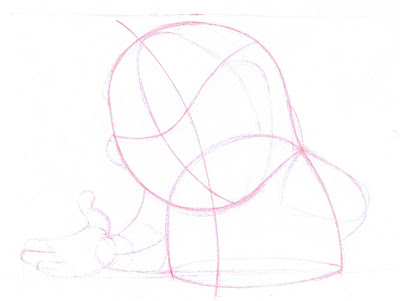
I construct all my drawings, I try to use simple forms. Sometimes I start light and faint so that the end result is clean.
Right now I'm at my parents' house where they have a non-professional scanner, It doesn't pick up what my Epson easily does.
Here I made the construction darker to be somewhat visible, It's a bit more visible with the contrast bumped up in Photoshop, Especially the hand.
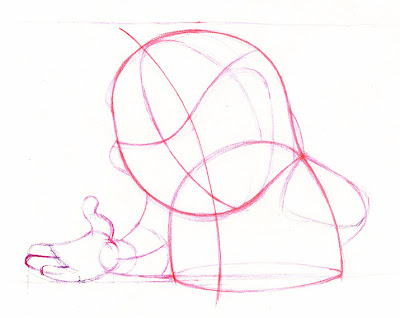
About the process: I think It's important to draw on a slanted surface and not a flat surface, A significant change of angle and plane will change the proportions.
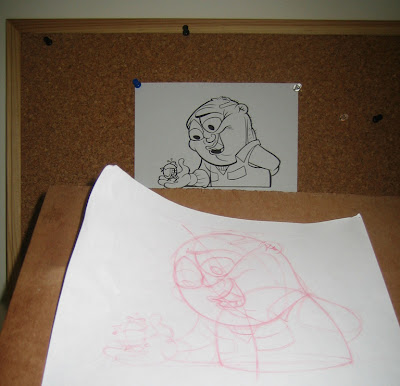
I've been using Photoshop as a study tool to compare my copies to the original, but this time I didn't want to do that. To compare my drawing to the original, I flipped the pages, just like animation paper.
I found it natural to do it that way, each step I would measure, draw and compare/flip, then make corrections/adjustments. Obviously the paper gets creased and crumpled, as seen in this snapshot.
After completion I scanned it into Photoshop, to lay the final result on top of the original:
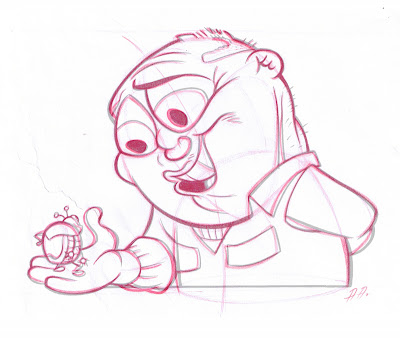
I'm happy with the result.
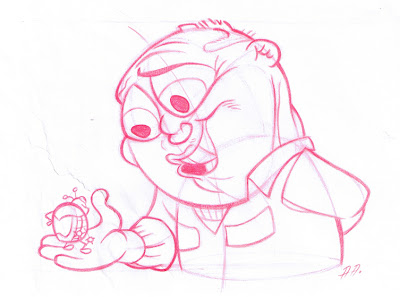


 These drawings were done at a very late hour of the night at John K's house after many beers,
These drawings were done at a very late hour of the night at John K's house after many beers,

 These are drawings John did for us before we stuffed our faces with yummy melted cheese and Canadian bacon.
These are drawings John did for us before we stuffed our faces with yummy melted cheese and Canadian bacon. John also encouraged us to look at poses by good artists like Harvey Kurtzman and Walt Kelly, and apply their clear poses.
John also encouraged us to look at poses by good artists like Harvey Kurtzman and Walt Kelly, and apply their clear poses.



 I'm happy with the result.
I'm happy with the result.
